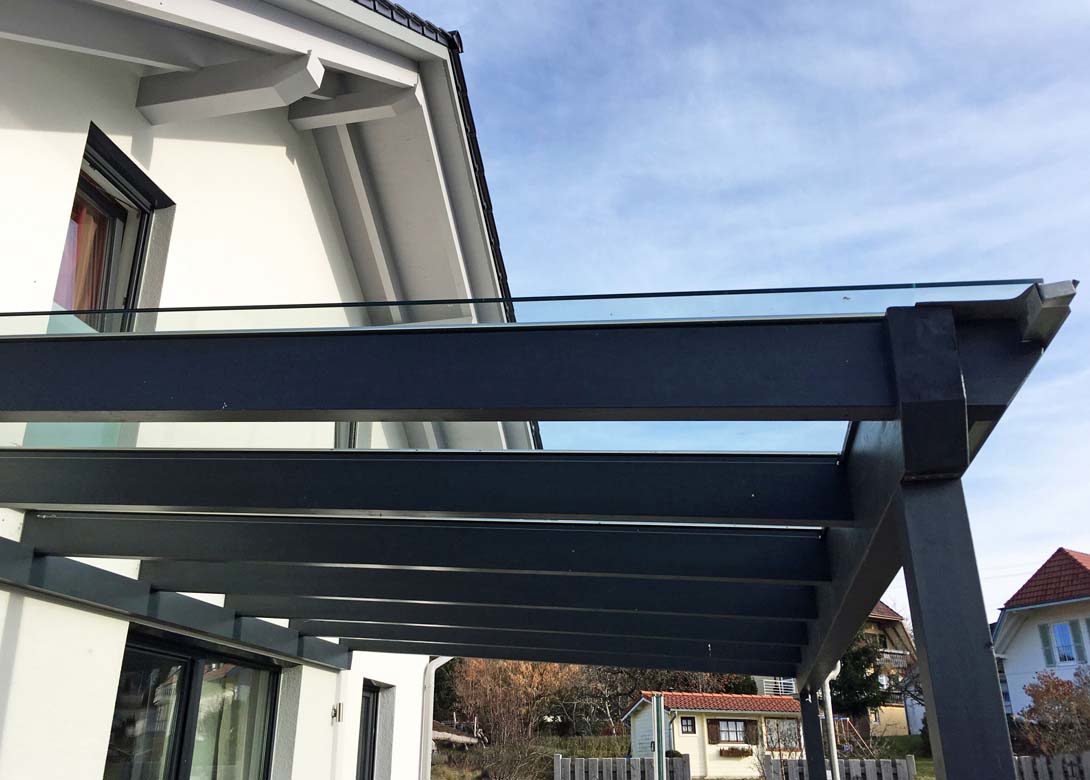
A covered terrace provides a shaded area in high temperatures or shelter to spend time outdoors even in bad weather. Stefan Huber, master carpenter and technical trainer at fischer, has built his own terrace roof out of wood and here, shares advice on the best methods to fasten timber terrace roofs.
A terrace is the ideal link between the indoors and outdoors. If the outdoor area is covered by a roof it can be used all year round in any weather. The surface, depth and height of the structure will affect the potential permit process. Stefan Huber’s roof is smaller than 30 square metres. According to the building code of the German state of Baden-Württemberg this does not require a permit. But planning regulations may differ depending on the federal state and community, which is why it is best to ask the relevant building authority whether your plans require approval and to submit a planning application where necessary.
To begin with, a foundation is laid that evenly distributes the structure’s load into the construction base. Local wind and weather conditions should be taken into account in order to determine the loads and correct dimensions of the foundation. If the house is located in the Black Forest, for instance, then you will have a snow load of approximately 260kg per square metre, which is higher than by the North Sea, for example. But the North Sea is exposed to higher wind loads than the Black Forest. These kinds of factors will affect the supporting structure.
In terms of materials, glue laminated wood, strength class GL24h features a conformity mark of Germany’s federal states and creates fewer cracks in the wood than in solid wood or KVH solid structural timber. Its multi-layered composition and weather resistant adhesive that connects the board layers with one another ensures that it is more even and dimensionally accurate than equivalent components made of solid wood.
There are opaque and transparent roofing variants. Laminated safety glass (LSG), for instance, allows daylight and solar heat to shine through to the areas located behind the roof. If the glass shatters, then the shards remain stuck to the adhesive foil contained between the panes of glass.
Installers can solve the main or secondary beam connection with full thread screws. In the above mentioned terrace roof, this is the connection between the rafters and the eaves purlin. If the rafter connects to the front side of the eaves purlin as a secondary beam, full thread screws are inserted at a 45 degree angle. This provides a pressure resistant connection that guarantees tensile strength under load effect.
The load-bearing terrace roof timber posts can be connected to the metal foot of the post with fischer’s approved steel sheet connection screw and can be inserted close to the edge without causing the wood to split. There is no need for predrilling in this case. Another connection point lies between the rafters and wall purlin, in which case flat head screws are a conventional solution. Compared to nails, they give the rafter more contact pressure, offering higher load bearing capacity under wind suction stress.
One of the most important connections in this particular application was the main wall purlin, which was attached to the frame work through the timber frame construction and exterior wall insulation. Here you can use a flat head screw to align the wall purlin and then use a full thread screw. The recommended spacing can also be found in the European Technical Approval (ETA). Next, simply mark the distance for each fastening point and then insert the full thread screw diagonally from below at an angle of 45 degrees. This way, when the wall purlin is subjected to a load, the tensile load is applied to the full thread screw.

Becca is the latest member to join our team and is eager to get stuck into the world of fasteners. She brings an enthusiastic and fresh outlook on what we do editorially and will be leading our social media activity – including sourcing material, editing articles and posting online.






